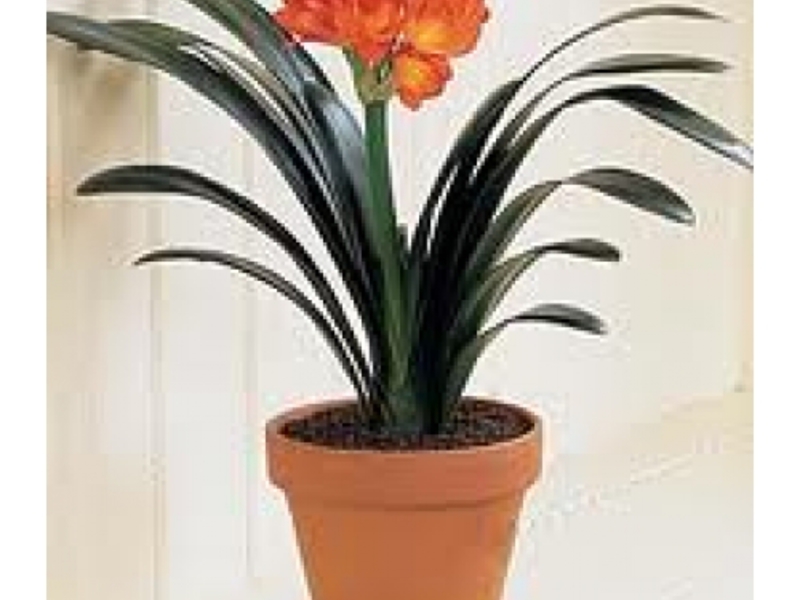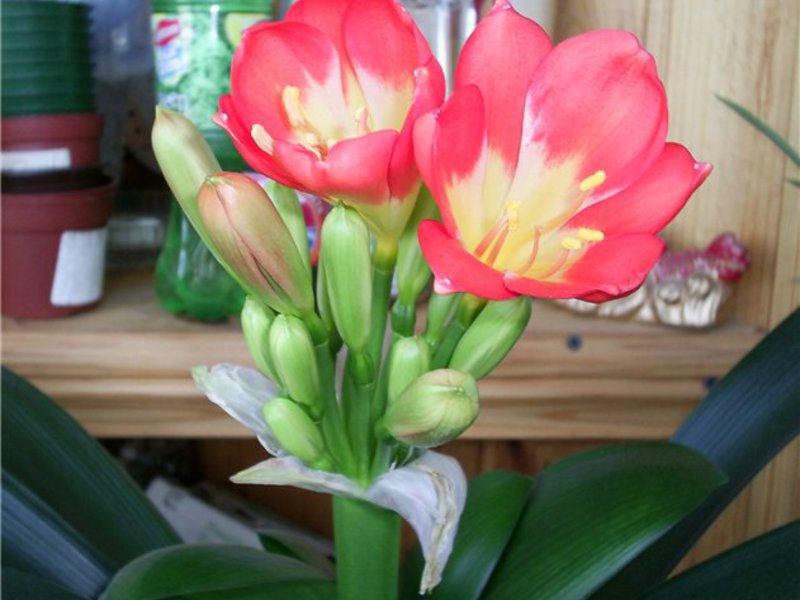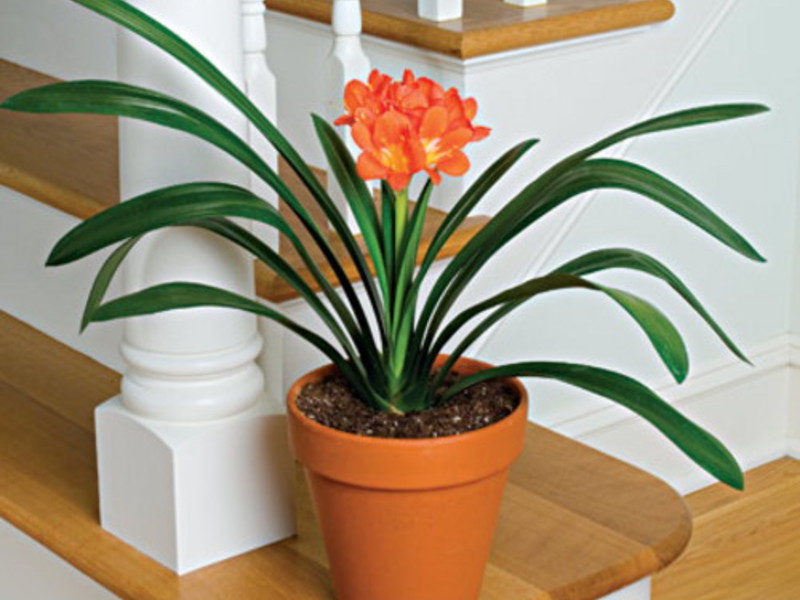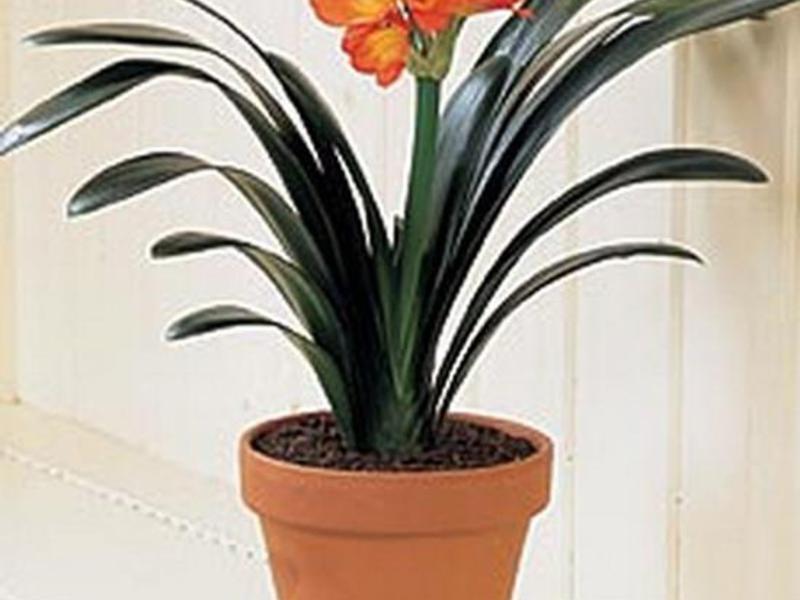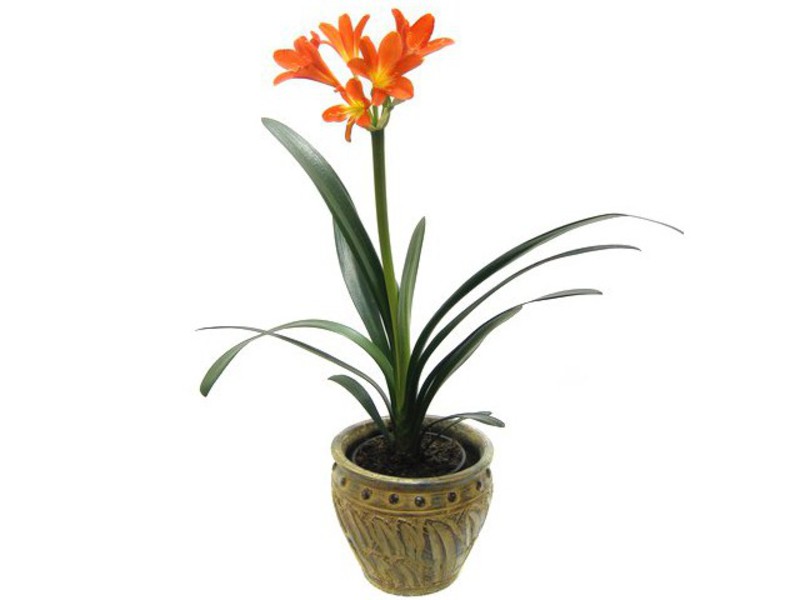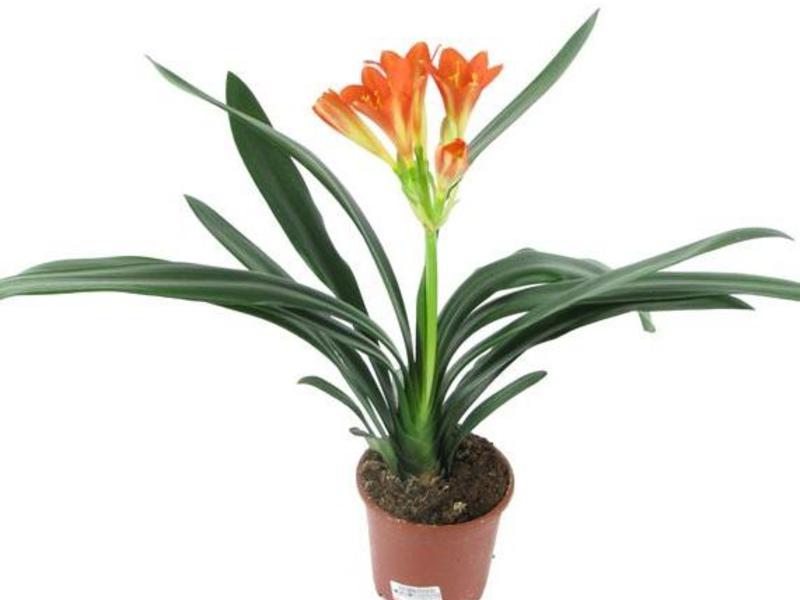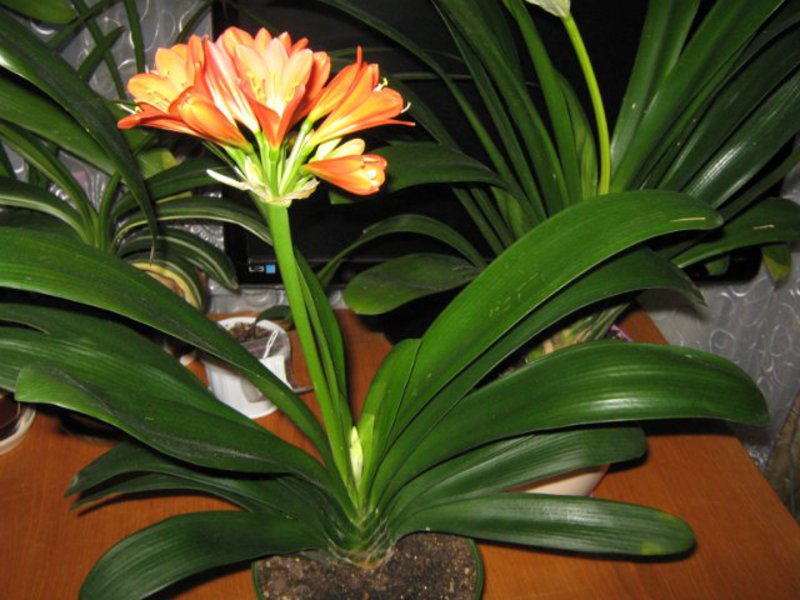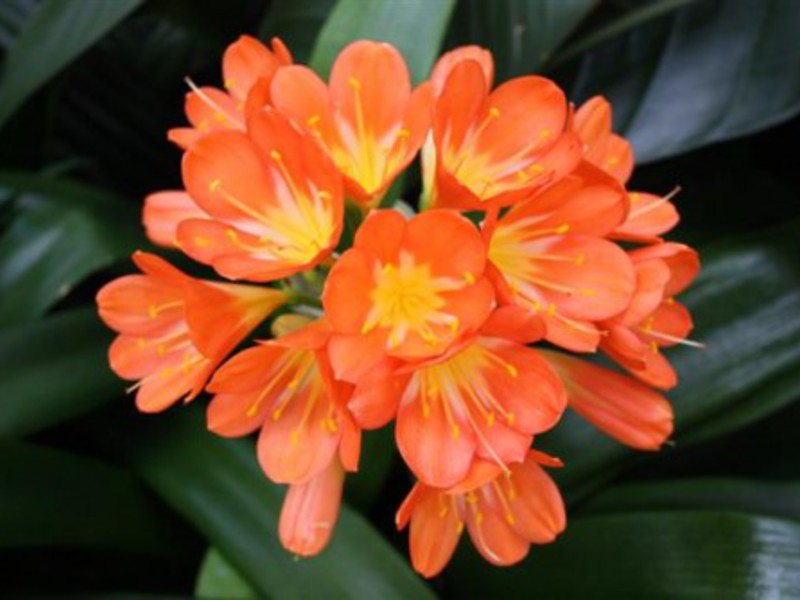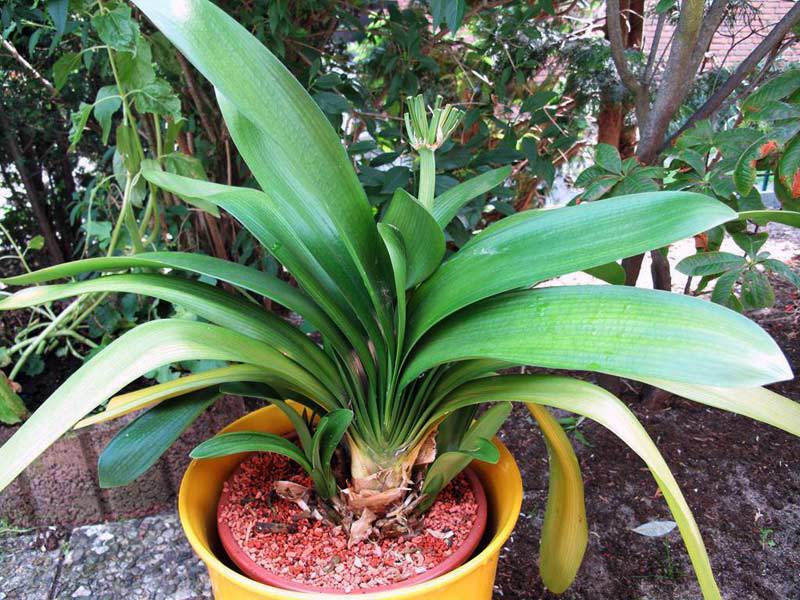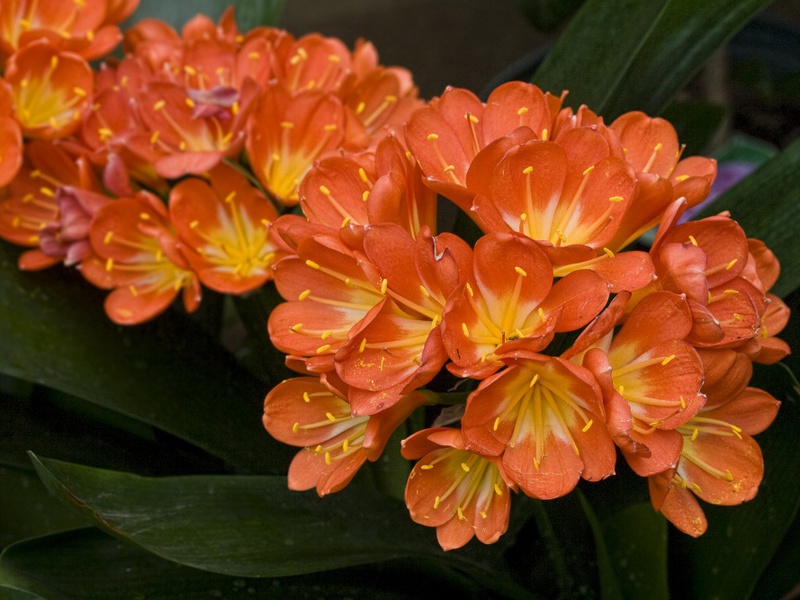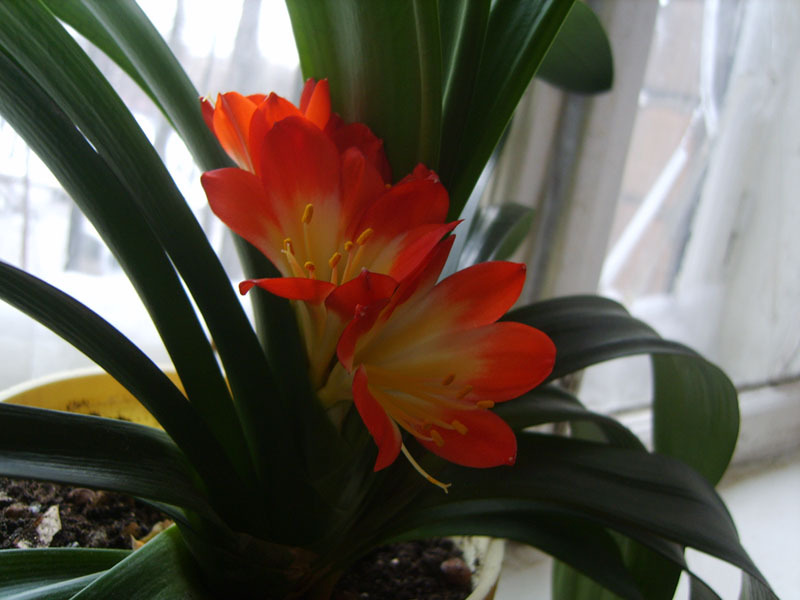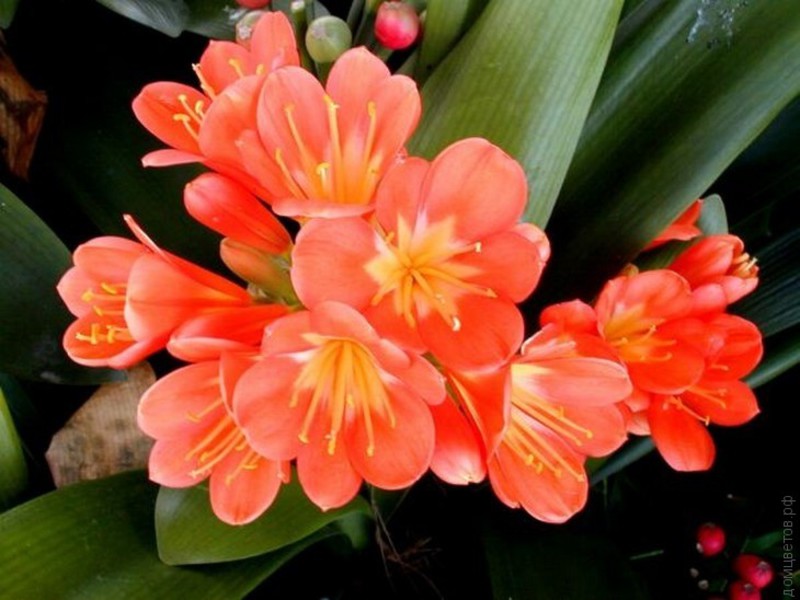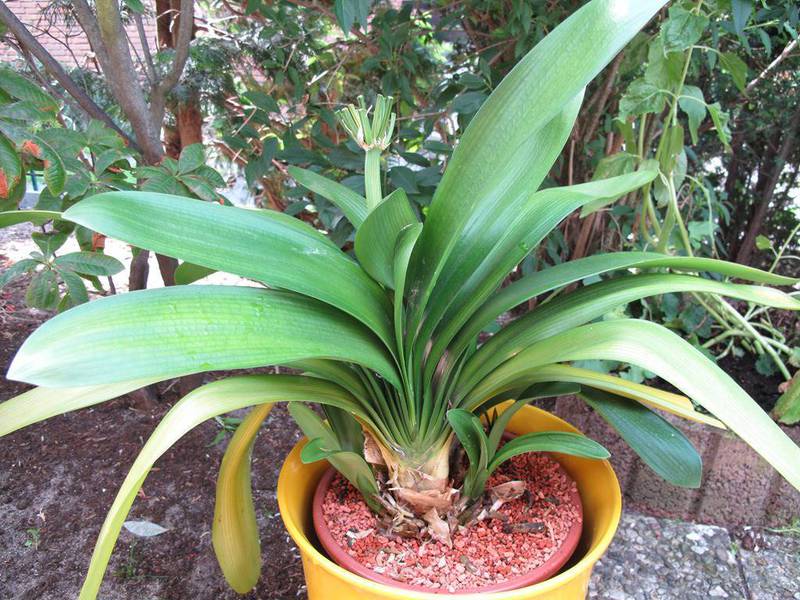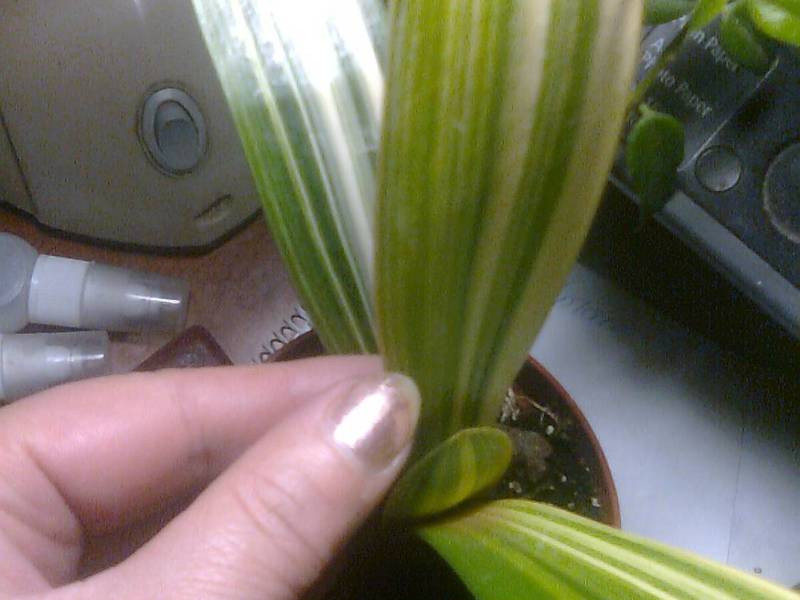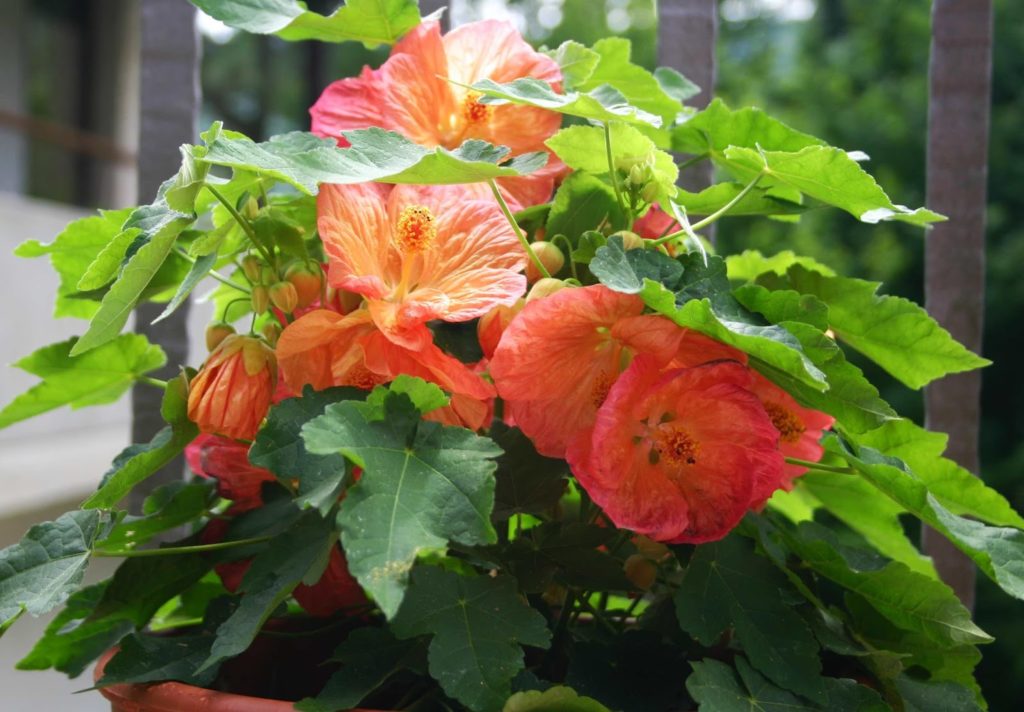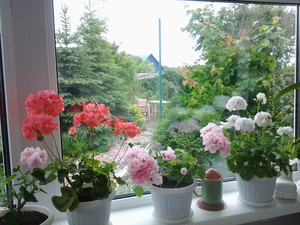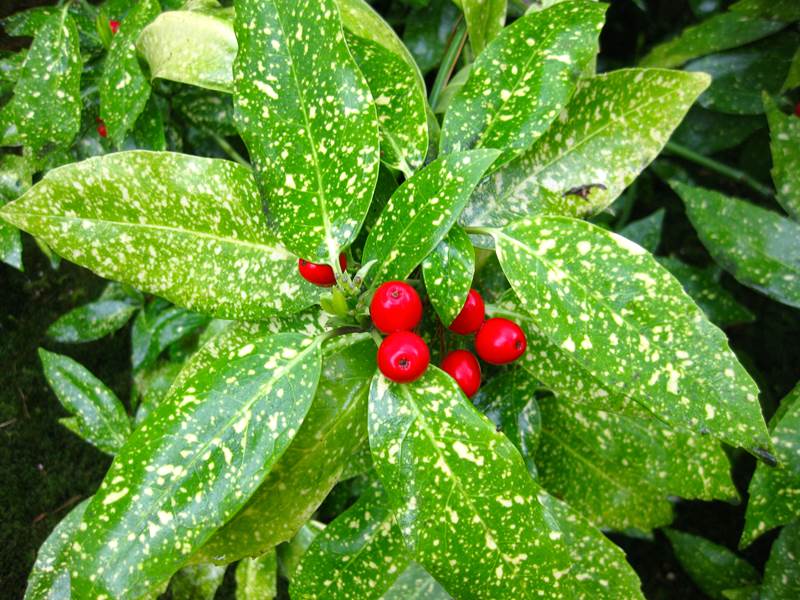Clivia has been known in Europe since the 19th century, when she was first brought to the continent. And, since that time, it has been actively grown as a houseplant. At the first acquaintance with this flower, florists drew attention to its unusual bright flowers adorning a large number of peduncles growing up to 33 cm in height.It is enough to have only one clivia bush in the house so that it amazes the grower with its beauty, because it can simultaneously tie up to 26 bright large flowers.
Over time, on the basis of this flower, many new varieties were bred, which differ from the mother in a variety of color shades and shapes.
Content
Blooming clivia: types
 It seems quite interesting the origin of the name of this plant... According to one hypothesis, one noble lady, the Duchess of Northumberland, Charlotte Clive ("Clive"), bore such an unusual name. This Englishwoman became known all over the world for the fact that it was with her that this flower first bloomed. It is noteworthy that the previously imported species of this plant have not yet been tied. Today, clivia is known as one of the popular herbaceous perennials, which is usually attributed to the amaryllis family.
It seems quite interesting the origin of the name of this plant... According to one hypothesis, one noble lady, the Duchess of Northumberland, Charlotte Clive ("Clive"), bore such an unusual name. This Englishwoman became known all over the world for the fact that it was with her that this flower first bloomed. It is noteworthy that the previously imported species of this plant have not yet been tied. Today, clivia is known as one of the popular herbaceous perennials, which is usually attributed to the amaryllis family.
In official sources, the plant is referred to as Cape clivia, which is associated with its habitat. Indeed, many experts know that many deciduous plants originated from the Cape floristic kingdom. This place is located in the southeast of the African continent, where there is the largest representation of this flower. When clivia ended up in our country, its name was slightly changed. She began to be referred to as meerkatos, which is associated with the bright color of the flowers. Under natural conditions, it has color from red to carrot... And therefore there is nothing unusual here, because the red lead has an orange-red lead color.
One of the characteristics of clivia is that it grows in groups in the wild. This is sufficient reason to include it in the group of stemless plants, which includes such plants known to florists as zamioculcas and sansevier. Clivia leaves have a fleshy and dense structure and are light green in spring, but over time they take on a darker hue, eventually becoming dark green. Plants aged 14 years typically have about 30 leaves, which can vary in length and width depending on the cultivar.
- Clivia gardena... It was with this variety that England's acquaintance with clivia began. This was facilitated by the European military, who brought him to foggy Albion. Major credit goes to Major Robert Garden, who served in Natal, an area of the African continent.
 Clivia cinnabar, or miniata... Among the varieties of indoor plants, this species is the most famous. Clivia cinnabar is a rather tall plant and can reach a height of 60 cm. The peduncle is elongated, 10-20 funnel-shaped flowers grow on it.It is useful to learn that cinnabar is called a shade of red. Clivia cinnabar is unique in that it is often found high in the mountains, taking root in areas located at an altitude of 600-800 meters above sea level.
Clivia cinnabar, or miniata... Among the varieties of indoor plants, this species is the most famous. Clivia cinnabar is a rather tall plant and can reach a height of 60 cm. The peduncle is elongated, 10-20 funnel-shaped flowers grow on it.It is useful to learn that cinnabar is called a shade of red. Clivia cinnabar is unique in that it is often found high in the mountains, taking root in areas located at an altitude of 600-800 meters above sea level.- Clivia citrine... It is customary to distinguish these flowers within the miniata variety, and they were discovered at the end of the 18th century. Having the same size and shape, the plant looks attractive thanks to the umbrella inflorescences that form flowers of an unusual lemon shade. This clivia variety has yellow fruits.
- Clivia the lovely... This variety has earned the attention of flower growers due to its unusual appearance. The plant grows in the form of a shrub, reaching a height of about 30 cm. On one peduncle, about 60 tubular flowers of an orange-red hue can be tied.
- Clivia powerful... This clivia variety is very prominent among its relatives. Adult specimens, as a rule, are up to 180 cm high, which are complemented by wide leaves and large flowers.
- Stem clivia... It is no less interesting in terms of dimensions. In adulthood, it has a height of about 2 meters, its natural habitat is South Africa.
Care rules
In accordance with the rules of agricultural technology, clivia must be provided with moderate watering, good lighting and a dormant period. Therefore, the florist will have to try hard to fulfill all these conditions.
Temperature and lighting
 There is not a single flowering plant in nature that could develop normally without light. Clivia is no exception. It is advisable to grow it on the west or east side of the house. But it is necessary to protect it from direct sunlight, otherwise it will lead to burns on the leaves. Therefore, if you decide to place a flower pot on the south side, then provide shade for it at noon.
There is not a single flowering plant in nature that could develop normally without light. Clivia is no exception. It is advisable to grow it on the west or east side of the house. But it is necessary to protect it from direct sunlight, otherwise it will lead to burns on the leaves. Therefore, if you decide to place a flower pot on the south side, then provide shade for it at noon.
Clivia can be grown if desired in partial shade conditionshowever, this will lead to certain limitations: it will grow much slower than plants grown on the sunny side. In addition, flowering under similar growing conditions is doubtful.
In summer, clivia feels good at temperatures no higher than 25 degrees. Serious changes in the biorhythm occur in autumn: in October, the length of daylight hours begins to decrease, so the plant becomes less active and accumulates strength to go into a dormant state. From this moment on, it is recommended to maintain the temperature no higher than 12-15 degrees. At the first signs of tying peduncles, it is necessary to increase the temperature regime. Fulfillment of these conditions will allow for a longer and more abundant flowering. The cultivation technique of clivia allows you to keep a flower pot on the balcony in summer.
Watering and moisture
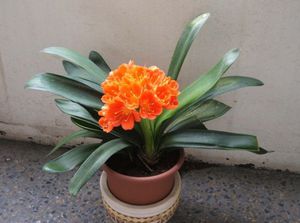 Clivia, which is grown indoors, can feel comfortable even in dry air. However, it won't be a mistake spray it periodically... True, here you need to be very careful and make sure that moisture does not get inside the leaf outlet.
Clivia, which is grown indoors, can feel comfortable even in dry air. However, it won't be a mistake spray it periodically... True, here you need to be very careful and make sure that moisture does not get inside the leaf outlet.
This is due to physiological characteristics: clivia belongs to a group of plants in which vaginal leaves are formed, therefore, when moisture enters them, it begins to accumulate and at some point causes decay. To avoid such unpleasant consequences, it is recommended to wipe wide leaves with a damp cloth from time to time.
Clivia belongs to drought-resistant plants, however, flooding with water negatively affects its development. Therefore it is necessary choose the right time between wateringsto allow the soil to dry out. In cool periods, it is necessary to adjust the irrigation regime, reducing the amount of water consumed. However, if the plant is at rest in a room where a high temperature is maintained, then watering is carried out according to the previous scheme.
Fertilizers and feeding
Fertilization benefits any indoor plant, including clivia. It especially needs nutrients during the period of active growth, and it is best to use complex mineral fertilizers at this stage. In some cases, they can be replaced with organic ones, for example, ash, mullein, etc. To obtain the desired effect, it is necessary to carry out top dressing every 10 days. The last time fertilization is applied at the end of September, so that, starting in October, when the plant goes into a dormant state, it does not disturb it until the peduncle appears.
Reproduction and transplantation
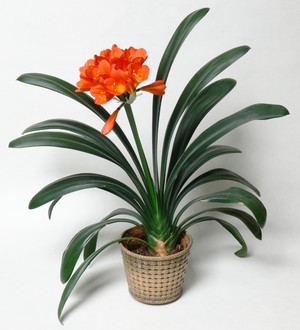 In order to avoid stressful situations, it is undesirable to often change the place of growing clivia. Therefore, it is necessary to carefully approach the choice of a place for it. The decision to undergo a clivia transplant should be deliberate, since this operation seriously injures the plant... To achieve abundant flowering of clivia, it is advisable to grow it in a pot of suitable size. If the flower was originally planted in an oversized dish, then you will have to be patient until the first flowers form.
In order to avoid stressful situations, it is undesirable to often change the place of growing clivia. Therefore, it is necessary to carefully approach the choice of a place for it. The decision to undergo a clivia transplant should be deliberate, since this operation seriously injures the plant... To achieve abundant flowering of clivia, it is advisable to grow it in a pot of suitable size. If the flower was originally planted in an oversized dish, then you will have to be patient until the first flowers form.
A cylindrical pot is most suitable for growing clivia at home. This choice is not accidental, since the root system is formed in the plant in depth. If you decide to grow it in a pot that tapers downwards, you will not achieve the desired result, since the clivia will feel uncomfortable in it.
Not less important properly plant the clivia.
- do not bury it too deep in the ground: it is optimal when the entire sheet part is located above the ground;
- it is also necessary to pay attention to the composition of the soil, which should have a loose and light structure. As a soil, you can use a mixture that is prepared on the basis of garden soil, peat and sand, which are taken in a 2: 1: 1 ratio. In the absence of a suitable planting soil, you can use any ready-made slightly acidic earthen mixture prepared from middle peat;
- it is allowed to add components such as bark, charcoal, vermiculite or perlite to the planting mixture.
The main breeding methods of clivia at home are as follows:
- Division of the bush. Adult specimens at the age of 4-5 years already have daughter processes by this time. After waiting for the moment when the number of leaves on the branches reaches 4-5, they begin to divide the processes from the mother plant and transplant them into individual pots. In the first days after transplanting, young plants need to be carefully cared for, especially watering. If you make a mistake with the water norm, then there is a danger of flooding them. It is best to replant plants after flowering.
- Seeds. Many growers practice clivia propagation at home by sowing seeds. However, it may not be suitable for novice flower growers due to the complexity of implementation. A serious problem can also be the fact that the plant takes a lot of energy to ripen the seeds, which is why it is seriously depleted.
Growing problems
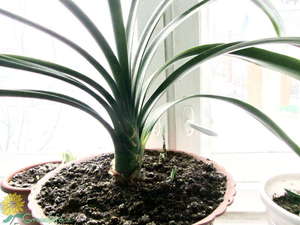 As a rule, caring for clivia at home does not cause much trouble for flower growers, but in some cases they may also have difficulties.
As a rule, caring for clivia at home does not cause much trouble for flower growers, but in some cases they may also have difficulties.
Why doesn't clivia bloom?
This situation is most often a concern for many flower lovers. However, you must first of all understand that the planted plants will be able to start only for 2-3 years. If the plant, with proper care, has never set flowers before, then create conditions for forced dormancy for it from October to March-April. But first, feed with phosphorus-potassium fertilizers in accordance with the instructions. They will provide the plant with the necessary elements for laying buds. If you feed the clivia too often with nitrogen fertilizers, it will grow many leaves, but not a single flower will be tied.
Why does clivia have a short peduncle?
Sometimes there are situations when a peduncle with buds does not have time to fully form. It looks like it is stuck between the leaves. This is usually the case when the plant lacks certain trace elements. And, most likely, we are talking about a deficiency of potassium and phosphorus, on which flowering depends. Therefore, preparing the plant for dormancy, it is necessary to apply phosphorus fertilizers to the soil.
It can also be explained by the excessively cool conditions during the formation of the peduncle. The reason for this could be a draft or a short-term drop in temperature below 12 degrees, due to which the flower arrow slowed down in its development. Seeing the beginning of the formation of the arrow, you need to on the same day move the plant to a warm place, then water thoroughly and fertilize.
Conclusion
Clivia is one of the interesting ornamental plants that has been actively cultivated for more than one century. Florists often choose clivia for growing at home, given its unpretentiousness. However, even this fact is not a sufficient reason to care for the clivia without taking into account its peculiarities. It is imperative to follow the rules of cultivation and care agrotechnics, otherwise you may encounter certain difficulties. For example, in clivia flowers cease to set. In this case, you will have to identify the cause and make certain adjustments in the care.
